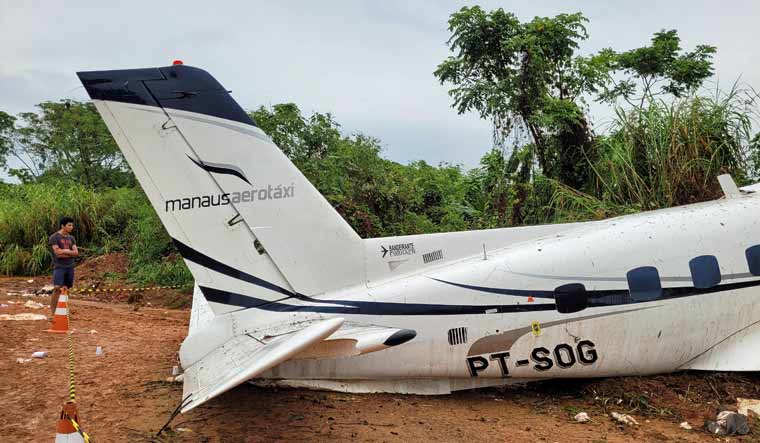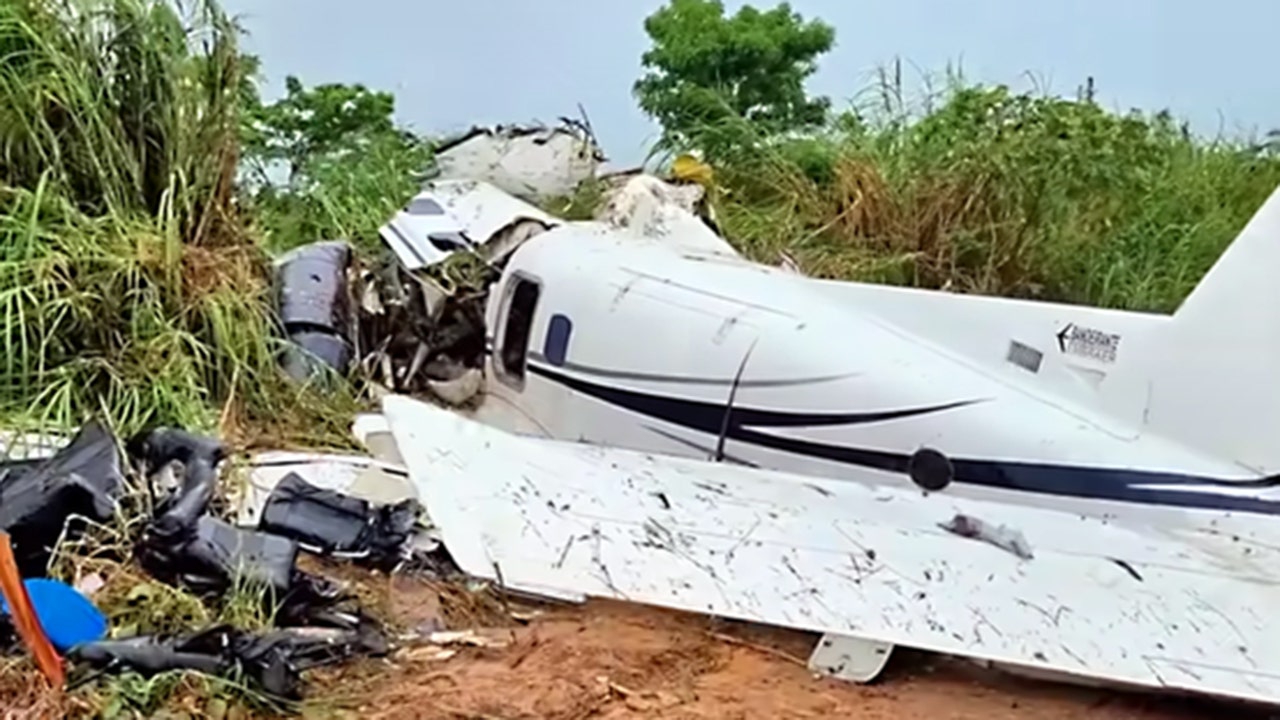Impact and Aftermath

The plane crash in Brazil has sent shockwaves through the local community, leaving behind a trail of grief and devastation. The tragedy has not only claimed the lives of passengers and crew but has also profoundly impacted the families of the victims, the aviation industry, and the nation as a whole.
Impact on the Local Community and Families
The crash has left a deep scar on the local community, where the loss of life has been felt acutely. The families of the victims are grappling with unimaginable grief and loss, facing the difficult task of coping with the sudden absence of their loved ones. The community is coming together to support these families, offering condolences, providing assistance, and organizing memorials to honor the memory of those lost.
Rescue and Recovery Efforts
Following the crash, emergency responders and authorities immediately launched a massive rescue and recovery operation. Teams of firefighters, paramedics, and search and rescue personnel worked tirelessly at the crash site, braving difficult terrain and challenging conditions to locate survivors and recover the remains of the victims. The authorities have also been working to identify the victims and inform their families, providing support and guidance during this difficult time.
Potential Consequences of the Crash
The plane crash has triggered a comprehensive investigation by Brazilian authorities and aviation safety experts to determine the cause of the accident. The investigation is expected to focus on various factors, including the aircraft’s maintenance history, the pilot’s experience, weather conditions, and air traffic control procedures. The findings of the investigation could lead to changes in safety regulations, stricter oversight of the aviation industry, and potentially legal actions against those found responsible.
Impact on the Aviation Industry
The crash has raised concerns about the safety of air travel and has prompted a reassessment of safety procedures and regulations within the aviation industry. Airlines and aviation authorities are likely to review their safety protocols and procedures in light of the accident, potentially leading to new regulations and stricter enforcement of existing ones. The crash could also impact public perception of air travel, leading to a decrease in passenger confidence and potentially affecting the profitability of airlines.
Table of Impacts and Consequences
| Impact Area | Description | Affected Parties | Expected Outcomes |
|---|---|---|---|
| Local Community | Loss of life, grief, and emotional distress | Families of victims, residents, and local businesses | Community support, memorial services, and potential long-term psychological impact |
| Families of Victims | Loss of loved ones, grief, and financial hardship | Families of passengers and crew | Grief counseling, financial compensation, and legal proceedings |
| Aviation Industry | Safety concerns, regulatory changes, and potential reputational damage | Airlines, aviation authorities, and manufacturers | Increased safety regulations, stricter oversight, and potential legal investigations |
| Public Perception | Increased anxiety about air travel, potential decline in passenger confidence | Potential travelers and the general public | Changes in travel behavior, increased demand for safety information, and potential impact on airline profitability |
Safety and Aviation Industry: Plane Crash Brazil Today

The recent plane crash in Brazil has once again brought the issue of aviation safety to the forefront. While air travel is generally considered safe, incidents like this highlight the importance of continuous vigilance and improvement in safety standards. This section will delve into the safety record of Brazilian aviation, the role of regulations and protocols in preventing accidents, and the investigation process underway to determine the cause of this tragedy.
Safety Record and International Standards
Brazil has a long history of commercial aviation, with a robust domestic market and a significant number of international flights. The safety record of Brazilian aviation has generally been considered comparable to international standards. However, recent years have seen a slight increase in accidents, raising concerns about potential areas for improvement. This analysis will compare the safety record of Brazilian aviation with international standards, identifying any notable trends.
- The International Civil Aviation Organization (ICAO) sets global standards for aviation safety. Brazil is a member of the ICAO and has generally adhered to its recommendations.
- The Brazilian National Civil Aviation Agency (ANAC) is responsible for regulating and overseeing the aviation industry in Brazil. ANAC implements ICAO standards and develops its own regulations to ensure safety.
- Data from the Aviation Safety Network (ASN) shows that Brazil’s accident rate per million departures is slightly higher than the global average. This suggests that while Brazil’s safety record is generally good, there is room for improvement in certain areas.
Role of Aviation Safety Regulations and Protocols, Plane crash brazil today
Aviation safety regulations and protocols are crucial in preventing accidents. These regulations cover various aspects of aviation, including aircraft design, maintenance, pilot training, air traffic control, and airport infrastructure.
- Stringent regulations regarding aircraft maintenance are vital. Regular inspections and adherence to maintenance schedules help ensure that aircraft are in safe operating condition.
- Pilot training is another critical component of aviation safety. Pilots undergo rigorous training to acquire the skills and knowledge necessary to operate aircraft safely.
- Effective air traffic control systems play a crucial role in preventing collisions and ensuring the safe flow of air traffic.
- Safety protocols, such as emergency procedures and communication protocols, are essential for responding effectively to incidents.
Investigation Process and Agencies Involved
Following an aviation accident, a thorough investigation is conducted to determine the cause and identify any factors that contributed to the incident. The investigation process typically involves multiple agencies and experts.
- The Brazilian authorities, including ANAC and the Brazilian Air Force, will lead the investigation.
- International organizations, such as the ICAO, may also participate in the investigation, providing technical expertise and guidance.
- The investigation will involve collecting evidence, analyzing data, interviewing witnesses, and conducting simulations to recreate the events leading up to the crash.
- The investigation process can take several months or even years to complete, depending on the complexity of the incident.
Safety Aspects and Recommendations
The following table summarizes key safety aspects, compares Brazilian and international standards, and suggests recommendations for improvement:
| Safety Aspect | Brazilian Standards | International Standards | Recommendations |
|---|---|---|---|
| Aircraft Maintenance | ANAC regulates aircraft maintenance, but there have been concerns about enforcement and compliance. | ICAO standards emphasize regular inspections and adherence to maintenance schedules. | Strengthen enforcement of maintenance regulations and implement stricter penalties for non-compliance. |
| Pilot Training | Brazil has rigorous pilot training programs, but there are concerns about the quality of training provided by some institutions. | ICAO standards require comprehensive pilot training programs, including flight simulation and practical training. | Ensure that all pilot training institutions meet international standards and implement quality control measures. |
| Air Traffic Control | Brazil has a modern air traffic control system, but there are concerns about capacity constraints and staffing levels in some areas. | ICAO standards recommend efficient and reliable air traffic control systems, with sufficient staffing and technology. | Invest in expanding air traffic control capacity and ensuring adequate staffing levels, particularly in high-traffic areas. |
| Safety Protocols | Brazil has established safety protocols, but there are concerns about the consistency of implementation and adherence to these protocols. | ICAO standards emphasize the importance of clear and comprehensive safety protocols, with regular training and drills. | Promote a culture of safety by ensuring consistent implementation of safety protocols and providing regular training and drills for all personnel. |
Plane crash brazil today – The news of another plane crash in Brazil today echoes the tragic history of aviation accidents in the region. One of the most devastating, plane crash sao paulo , serves as a chilling reminder of the fragility of flight. The investigation into today’s incident will undoubtedly focus on the specific circumstances, but the shadow of past tragedies will linger, reminding us of the constant vulnerability that comes with taking to the skies.
The news of the plane crash in Brazil today echoes the unsettling reality of fragility, a stark reminder that even amidst the spectacle of presidential debates and political discourse, life hangs by a thread. The tragedy serves as a poignant reminder of the fragility of life, and the ever-present shadow of misfortune that looms over our existence, no matter how far removed we may feel from such events.
